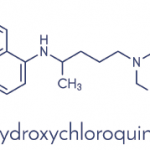 Hydroxychloroquine (HCQ) is nearly universally recommended for pregnant patients with systemic lupus erythematosus (SLE) to reduce lupus disease activity and adverse outcomes in pregnancy.1-3 Yet despite strong evidence supporting its benefits, HCQ appears underutilized, with several studies suggesting fewer than half of all women with lupus take this medication during pregnancy.4
Hydroxychloroquine (HCQ) is nearly universally recommended for pregnant patients with systemic lupus erythematosus (SLE) to reduce lupus disease activity and adverse outcomes in pregnancy.1-3 Yet despite strong evidence supporting its benefits, HCQ appears underutilized, with several studies suggesting fewer than half of all women with lupus take this medication during pregnancy.4
How accurately these results reflect patient adherence depends on how we measure adherence and what we assume about those not taking HCQ. Our recent work examining HCQ use during pregnancy seeks to address this issue. We used data on prescriptions written and filled, as well as qualitative clinical notes documenting patient treatment plans.5,6
Medication use requires that physicians place the order and patients fill and take the medication. Prior studies of medication use by women with SLE during pregnancy have examined reimbursement claims, pharmacy prescription fills or self-reported use in surveys or clinical notes.4,7,8 Interpreting low HCQ use measured by patient fill data alone assumes that patient nonadherence is the most significant contributing factor. However, physician prescribing practices provide critical context: Patients can’t get a medication without a physician’s prescription. Additionally, just because a prescription is filled does not guarantee the patient takes the medication as recommended, and a patient’s self-report may be inaccurate. Therefore, discussions of adherence and what actions are necessary to improve it should consider not only the patient, but also prescribing practices.
Primary Adherence
Our new study on HCQ use in pregnant patients with SLE published in ACR Open Rheumatology aimed to address primary adherence, or failure to fill a new prescription order.5 We wanted to find out whether adherence to physician orders reflected overall rates of HCQ use by patients as measured by prescription fills. The researchers examined electronic health record data to study prescription orders and fills for a cohort of pregnant patients with lupus. Patients with two or more ICD-coded visits for SLE at least seven days apart and one year prior to their last menstrual period with pregnancies ending in a delivery—still or live born—from 2011–20 were included (n=419).
The study focused primarily on new (physician or pharmacy-initiated) outpatient orders for HCQ. To improve capturing patient exposure to HCQ, the team also noted whether those without new orders had an existing prescription order from the pre-pregnancy period whose supply carried over into their pregnancy.
Frequency of prescription orders and the proportion filled—ever and within 30 days—was calculated. Due to possible changes in physician or patient adherence to guidelines over time, results were also examined separately for the periods 2011–2015, 2016–2019, and 2020. The year 2020 was considered separately due to COVID-19-related HCQ supply issues. For comparison, fills were also examined one year before the pregnancy (i.e., pre-pregnancy period).

